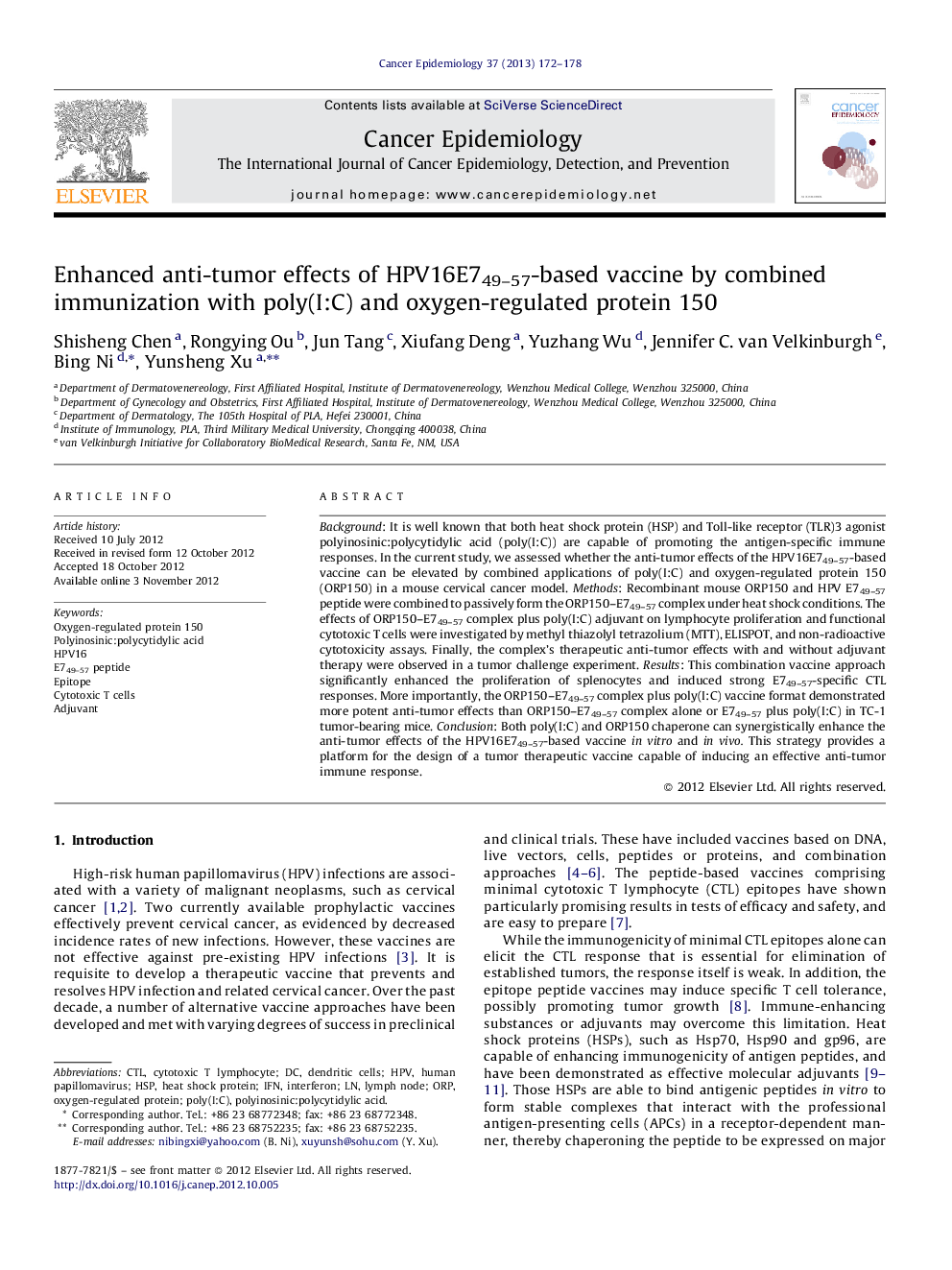| Article ID | Journal | Published Year | Pages | File Type |
|---|---|---|---|---|
| 2109125 | Cancer Epidemiology | 2013 | 7 Pages |
Background: It is well known that both heat shock protein (HSP) and Toll-like receptor (TLR)3 agonist polyinosinic:polycytidylic acid (poly(I:C)) are capable of promoting the antigen-specific immune responses. In the current study, we assessed whether the anti-tumor effects of the HPV16E749–57-based vaccine can be elevated by combined applications of poly(I:C) and oxygen-regulated protein 150 (ORP150) in a mouse cervical cancer model. Methods: Recombinant mouse ORP150 and HPV E749–57 peptide were combined to passively form the ORP150–E749–57 complex under heat shock conditions. The effects of ORP150–E749–57 complex plus poly(I:C) adjuvant on lymphocyte proliferation and functional cytotoxic T cells were investigated by methyl thiazolyl tetrazolium (MTT), ELISPOT, and non-radioactive cytotoxicity assays. Finally, the complex's therapeutic anti-tumor effects with and without adjuvant therapy were observed in a tumor challenge experiment. Results: This combination vaccine approach significantly enhanced the proliferation of splenocytes and induced strong E749–57-specific CTL responses. More importantly, the ORP150–E749–57 complex plus poly(I:C) vaccine format demonstrated more potent anti-tumor effects than ORP150–E749–57 complex alone or E749–57 plus poly(I:C) in TC-1 tumor-bearing mice. Conclusion: Both poly(I:C) and ORP150 chaperone can synergistically enhance the anti-tumor effects of the HPV16E749–57-based vaccine in vitro and in vivo. This strategy provides a platform for the design of a tumor therapeutic vaccine capable of inducing an effective anti-tumor immune response.
